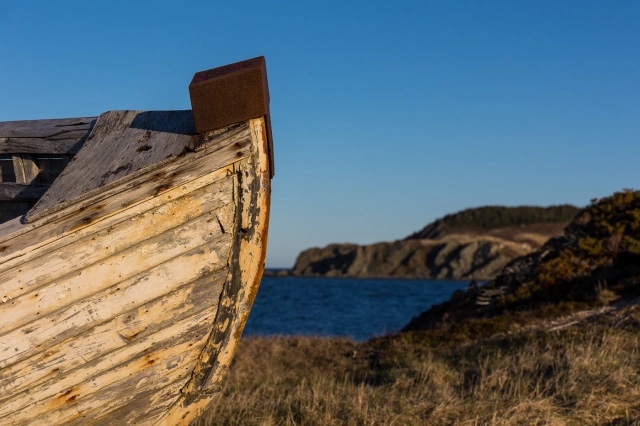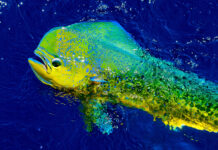Folk music has a rich history of storytelling, often focusing on tales of adventure, heroism, and the mysteries of the world. One of the most captivating themes in folk music is the high seas—an untamed, unpredictable force where sailors embark on legendary journeys. Composing a folk song about adventures on the high seas allows you to capture the spirit of exploration, danger, and triumph in a simple yet evocative style. This article will guide you through the process of writing a folk song that brings to life the thrilling adventures of sailors and pirates as they navigate the open waters.
Table of Contents
Toggle1. Drawing Inspiration from Sea Legends and Folklore
The sea has always been a source of fascination and mystery, making it a frequent subject in folk tales and songs. When composing your folk song, look for inspiration in nautical legends, pirate stories, or historical accounts of famous sea voyages. Some classic tales include the adventures of pirates like Blackbeard, the search for treasure islands, or encounters with mythical creatures like mermaids or the Kraken.
Additionally, folk songs often draw from real-life struggles and emotions. Think about the feelings of longing, homesickness, or courage that sailors experienced while at sea. These themes can add emotional depth to your song and make it more relatable.
2. Crafting a Traditional Folk Melody
A great folk song starts with a memorable, simple melody that is easy to sing and carry along. Folk music is often passed down orally, so melodies need to be accessible for audiences to remember and share. Here are some elements to consider when composing your melody:
- Major Key: Many sea shanties and folk songs about the sea are composed in major keys, which convey a sense of optimism, adventure, and camaraderie. For a more somber tone, you can experiment with minor keys to express hardship or loss.
- Repetition: Folk music thrives on repetition. Incorporate a recurring chorus or refrain that sailors and listeners can sing together, giving the song a communal, sing-along quality.
- Acoustic Instruments: Stick to traditional acoustic instruments such as guitar, banjo, mandolin, or accordion. These instruments are perfect for capturing the authentic, rustic feel of a folk song. A fiddle or harmonica can also add a haunting, maritime vibe.
The melody should feel like a wave—rising and falling with the tide, mimicking the ups and downs of a sailor’s life.
3. Writing Adventurous Lyrics
The lyrics are where you bring your sea-faring tale to life. Focus on storytelling, with vivid descriptions of the journey, the challenges faced, and the ultimate goal. Here are some tips for writing the lyrics of your high-seas folk song:
- Setting the Scene: Begin by setting the scene with imagery of the vast ocean, the ship, and the crew. Use poetic language to create a vivid picture of the adventure. For example:
“With the wind at our backs and the stars in the sky,
We sail the wild waters where legends don’t die.” - Characters and Challenges: Introduce your characters—brave sailors, cunning pirates, or even mythical sea creatures. Let them face challenges like violent storms, battles with rival ships, or the quest for lost treasure. Your lyrics should convey a sense of danger and excitement: “The waves crashed upon us, the thunder did roar,
But we pressed on through darkness, to distant shores once more.” - Emotion and Reflection: Folk songs often include personal reflection or emotional moments. Highlight the sailor’s thoughts about home, family, or the purpose of the voyage. This helps ground the adventure in human emotions, making the story more relatable.
- Chorus: Create a catchy, repetitive chorus that encapsulates the spirit of the journey. For example:
“Oh, we sail, we sail, with our hearts full of fire,
Across the seas, to chase our desire.”
4. Incorporating Sea Shanty Rhythms
Sea shanties are a specific style of folk music sung by sailors to coordinate their labor on ships. While your song doesn’t have to be a traditional shanty, incorporating the rhythmic, call-and-response elements of shanties can give it a maritime feel. Shanties often have a steady, march-like tempo that mirrors the movements of rowing or hoisting sails.
Consider adding rhythmic foot stomps or claps to simulate the sound of a crew working together. The call-and-response structure—where a lead singer delivers a line and the crew (or audience) repeats or responds—adds energy and makes the song interactive:
Lead: “Hoist the sails and face the storm!”
Crew: “Hoist the sails and keep us warm!”
This structure keeps the song engaging and encourages group participation.
5. Creating an Emotional Arc
A good folk song tells a story with a clear beginning, middle, and end. Your high-seas adventure should follow this structure, giving listeners a satisfying emotional arc:
- Beginning: Start with excitement as the ship embarks on its journey, capturing the enthusiasm and optimism of the sailors setting out to sea.
- Middle: Introduce tension or conflict, whether it’s a brewing storm, a battle with pirates, or an encounter with a sea monster. Build suspense as the sailors face obstacles.
- End: Conclude the song with either a triumphant victory or a bittersweet reflection. Perhaps the crew finds the treasure, or maybe they return home after a long, challenging voyage. The ending should provide closure and a sense of accomplishment:
“Now we rest our weary heads, beneath the moonlit sky,
Our journey’s done, the gold is won, and the stars will say goodbye.”
6. Bringing the Song to Life: Performance Tips
Once you’ve written the song, think about how you’ll bring it to life through performance. Folk songs are meant to be shared, so consider performing it in a way that connects with the audience:
- Sing with Passion: Folk songs are all about storytelling, so make sure your performance conveys emotion. Sing the verses with a sense of adventure, and deliver the chorus with energy to get the audience involved.
- Audience Participation: Encourage the audience to sing along during the chorus or clap to the beat. This adds to the communal spirit of folk music, especially when the song tells a tale of camaraderie among sailors.
- Acoustic Arrangement: Keep the instrumentation simple and let the vocals and lyrics take center stage. A single guitar or a small folk band is enough to convey the essence of the song without over-complicating it.
7. Adding a Twist of Myth and Magic
For an added layer of intrigue, weave elements of myth and magic into your song. The sea has long been a setting for legends of sea monsters, cursed ships, and ghostly sailors. These fantastical elements can heighten the drama and create a sense of wonder. Consider adding lyrics about:
- Mythical Creatures: Include encounters with mermaids, sea serpents, or sirens who lure sailors to their doom.
- Cursed Ships: Tell the tale of a ghostly pirate ship that haunts the seas, forever searching for redemption.
- The Quest for a Legendary Treasure: The sailors could be on a quest for a mythical treasure, hidden on a mysterious island or at the bottom of the ocean.
These touches of fantasy make your song more than just an adventure—it becomes a legendary saga that captivates the imagination.
Composing a folk song about legendary adventures on the high seas is an exciting way to capture the thrill of exploration, the dangers of the ocean, and the camaraderie of sailors. By drawing inspiration from sea legends, crafting a simple yet powerful melody, writing adventurous lyrics, and incorporating rhythmic elements of sea shanties, you can create a song that transports listeners to a world of maritime mystery. Whether your tale is triumphant, bittersweet, or filled with mythical wonder, your folk song will embody the timeless allure of the high seas. So, grab your guitar, set sail, and let the music carry you on a legendary voyage!








